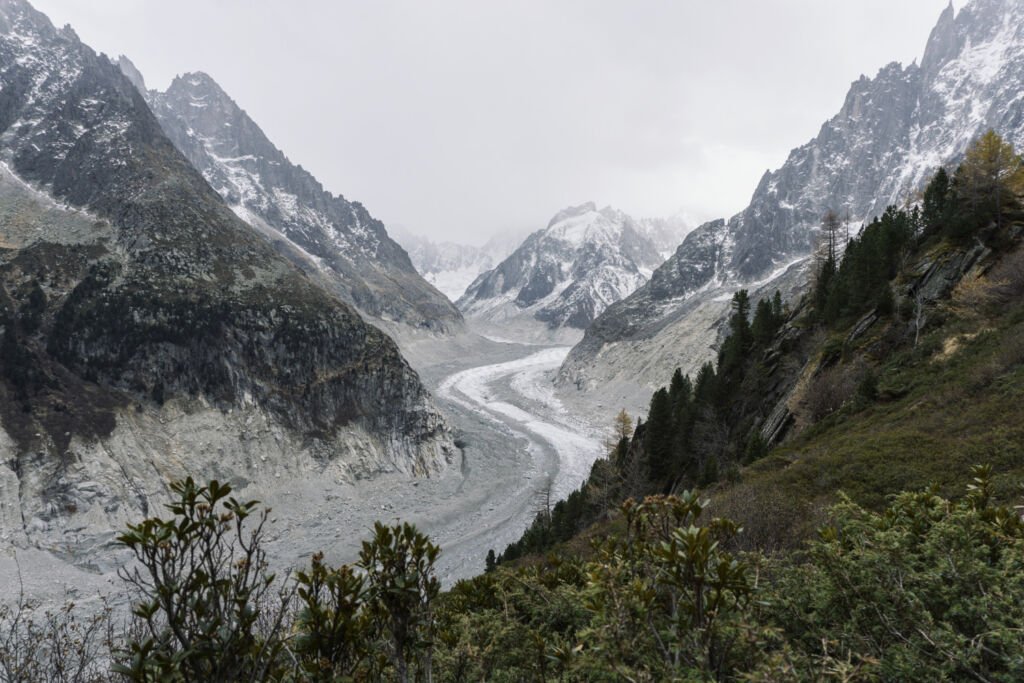Introduction:
Imagine a land of towering peaks, where snow leopards prowl among glaciers, and vibrant orchids bloom in ancient forests. This is the Hindu Kush Himalayas (HKH), a realm where nature’s artistry finds its most astonishing expression.
The HKH’s immensity is astounding. Spanning eight nations, this mountain range cradles diverse ecosystems: lush valleys, wildflower-painted meadows, high-altitude wetlands, and even arid steppes teeming with resilient life.

This ecological mosaic supports a treasure trove of biodiversity. The Hindu Kush Himalayas shelter thousands of unique plant and animal species, making them a global biodiversity hotspot.
More than just breathtaking scenery, the HKH are the beating heart of Asia. Their glaciers and rivers act as “water towers,” sustaining billions downstream. Food security, clean water, and even pollination services for crops rely on the rich biodiversity of the Hindu Kush Himalayas.
Biodiversity ensures resilience in the face of change. These complex ecosystems can better withstand climate impacts and disturbances. From sacred landscapes to generations of ecological knowledge, the biodiversity of the Hindu Kush Himalayas carries deep cultural and spiritual significance.
The Hindu Kush Himalayas: A Realm of Vastness and Diversity:
The Hindu Kush Himalayas (HKH) stretch across a monumental area encompassing Afghanistan, Pakistan, India, Nepal, Bhutan, Bangladesh, Myanmar, and China. Covering approximately 3,500 kilometers, these mountains form a breathtaking natural boundary and are truly a sight to behold.
1. Diverse Ecosystems:
A stunning mosaic of ecosystems shapes the Hindu Kush Himalayas’ landscape:
● Lush valleys and tropical forests: Teeming with vibrant flora and fauna.
● Alpine meadows: Carpeted with wildflowers against a backdrop of glacial peaks.
● High-altitude grasslands and wetlands: Unique habitats home to specialized species.
● Environments: Harsh yet harboring resilient life.
2. Incredible Biodiversity of the Hindu Kush Himalayas:
This astonishing ecological diversity makes the Hindu Kush Himalayas a global biodiversity hotspot:
Over 35,000 plant species: Including an exceptional range of medicinal plants and orchids.
More than 200 animal species: Encompassing iconic creatures like the snow leopard, red panda, and Himalayan musk deer.
The Hindu Kush Himalayas region is like a vast repository of natural wonders, a realm where biodiversity finds its most awe-inspiring expression.
Role of Hindu Kush Himalayas as a critical water source for billions:
The Hindu Kush Himalayas, acting as a natural reservoir, hold the key to water security for countless people and ecosystems. They represent a true lifeline for much of the Asian continent. The Hindu Kush Himalayas play a pivotal role as a water source.
The Water Towers of Asia: The Hindu Kush Himalayas rightfully earn the nickname “Water Towers of Asia.” Their massive glaciers, snowpack, and intricate river systems sustain ecosystems and billions of lives downstream.

Source of 10 Major Rivers: The mighty Indus, Ganges, Brahmaputra, Yangtze, Mekong, and others originate within the Hindu Kush Himalayas, flowing outwards to nurture vast populations.
Lifeblood for Communities: These rivers supply water for drinking, irrigation, and crucial hydropower generation, powering cities and supporting agriculture in several countries.
Supporting Diverse Ecosystems: Water from the Hindu Kush Himalayas sustains lush wetlands, vibrant forests teeming with life, and productive agricultural lands across an immense region.
Importance of Biodiversity of the Hindu Kush Himalayas:
1. Ecosystem Services:
Food Security: The HKH’s diversity nourishes local communities. Wild edible plants, rich agrobiodiversity, and fisheries sustained by healthy rivers supply staples and dietary variety.
Clean Water Provision: Pristine glaciers and forests in the HKH act as natural filtration systems. Mountain ecosystems regulate water flow, ensuring clean water availability downstream.
Pollination Powerhouse: HKH pollinators (bees, birds, butterflies) are vital for agriculture. They secure crop yields and ensure a bounty of fruits, nuts, and other foods.
Other Critical Services: Biodiversity fuels timber and non-timber forest products, medicines, soil fertility, and carbon sequestration (combating climate change).
2. Resilience to Change:
Buffering Climate Impacts: Rich biodiversity enhances an ecosystem’s ability to withstand change. Forests mitigate floods, diverse plant life increases resistance to disease outbreaks, and complex food webs make ecosystems less vulnerable to disruptions.
Adapting to Change: A diversity of crops and livestock means farmers can adapt to shifts in climate or disease patterns. Biodiversity protects vital services, helping ecosystems bounce back from disturbances.

3. Cultural and Spiritual Significance:
Sacred Landscapes: Mountains in the Hindu Kush Himalayas have profound spiritual meaning for multiple cultures. Diverse flora and fauna hold symbolic importance in religious rituals and traditional practices.
Inspiration and Well-being: The serene beauty, wildlife, and natural ecosystems are woven into art, literature, and traditions. For people in the region, these natural wonders are sources of mental and spiritual renewal.
Traditional Knowledge: Communities living within the HKH possess generations of knowledge about plants and animals for healing, food, and sustainable resource use. This knowledge is inextricably linked to biodiversity conservation.
Sustainable Land-Use Practices of the Hindu Kush Himalayas:
1. Promoting Regenerative Agriculture and Agroforestry:
Regenerative Agriculture: These practices restore and build healthy soil, increasing resilience to climate change while minimizing dependence on external inputs. Techniques include: cover cropping, No-till practices, crop rotation etc.
Agroforestry: Cultivating trees alongside crops and livestock on the same land offers multifaceted benefits. Techniques include soil protection, crop diversity etc
Fodder provision: Trees provide feed for livestock
Additional income: Trees provide fruit, timber, and other products
2. Controlled Grazing and Responsible Resource Extraction:
Controlled Grazing: Traditional nomadic grazing systems have long been practiced in the Hindu Kush Himalayas. Sustainable models focus on rotational grazing, matching livestock numbers etc.
Responsible Resource Extraction:
- Regulated timber harvesting: Selective cutting prevents large-scale forest loss
- Sustainable collection of medicinal plants: Harvesting done within regeneration limits
- Community-based monitoring: Prevents overexploitation and illegal extraction
3. Community-Based Land Management:
Empowering Local Communities: Communities within the HKH have the knowledge and vested interest to manage resources sustainably. Success depends on:
- Traditional ecological knowledge
- Decision-making power
- Benefit-sharing schemes
- Successful models (Community forests, conservation easements, and collective resource management etc)
Primary Risk Factors of the Hindu Kush Himalayas:
The vibrant biodiversity of the Hindu Kush Himalayas (HKH) whispers of incredible resilience, but a silent crisis brews. An ominous mix of forces is unraveling the tapestry of life in these awe-inspiring mountains. Let’s look at the major threats:
1. Climate Change:
- Rising temperatures: Altering habitats, species ranges, and phenology (timing of plant/animal life cycles)
- Glacial melt: Disrupting water flows, ecosystems, and increasing disaster risks
- Extreme weather events: Floods, landslides, droughts impacting sensitive ecosystems.

2. Habitat Loss and Fragmentation:
- Land-use change: Conversion for agriculture, infrastructure, urbanization
- Fragmentation: Isolating populations, making them less resilient
- Degradation: Pollution, overexploitation of resources
3. Invasive Alien Species:
- Outcompeting native species for resources
- Spreading disease
- Altering the delicate balance of ecosystems
4. Unsustainable Resource Exploitation:
- Overharvesting: Plants (medicinal, timber), wildlife (poaching, illegal trade)
- Destructive practices: Mining, unsustainable resource extraction
Impacts of Risk of Biodiversity of the Hindu Kush Himalayas:
The biodiversity of the Hindu Kush Himalayas (HKH), a cradle of life and source of sustenance, faces an escalating crisis. If this ecological richness is lost, the repercussions will cascade across populations, economies, and the very soul of this diverse region. Let’s examine the alarming consequences:
1. Species Loss and Extinctions:
- Disappearance of unique, endemic flora and fauna
- Cascade effects: Losing key organisms disrupting the entire food web

2. Ecosystem Services Decline:
- Reduction in water supply, food production, pollination
- Decreased resilience to natural disasters
- Decreased natural disease control
3. Socioeconomic Implications:
- Livelihoods of communities relying on natural resources heavily impacted
- Increased poverty and food insecurity
- Impacts on tourism and cultural activities
Mitigation and Adaptation Strategies:
The biodiversity of the Hindu Kush Himalayas faces escalating threats. But there’s a path forward, a way to combat these risks and chart a more resilient future. Here’s how mitigation and adaptation strategies can play a crucial role:
1. Conservation and Protected Areas:
- Expanding protected areas network
- Effective management and monitoring
- Transboundary cooperation (Wildlife corridors across borders)
2. Sustainable Land-Use Practices::
- Promoting regenerative agriculture and agroforestry
- Controlled grazing and responsible resource extraction
- Community-based land management
3. Climate Change Adaptation:
- Nature-based solutions (ecosystem restoration, afforestation)
- Early warning systems, disaster preparedness
4. Combating Invasive Species:
- Early detection and rapid response systems
- Strict quarantine measures
- Research into prevention and control
Collaboration and Policy Frameworks:
Protecting the dazzling biodiversity of the Hindu Kush Himalayas demands action far beyond a single community or nation. The interwoven ecological systems and complex challenges facing this region require teamwork on a grand scale.
Here’s where collaboration and thoughtful policy frameworks step in:
1. International Cooperation:
- Shared responsibilities of HKH nations
- Coordinated monitoring and research
- Funding support for conservation initiatives
2. Strengthening Law and Governance:
- Enforcing wildlife protection laws
- Combating illegal trade of endangered species
- Policies incentivizing sustainable land use

3. Community Engagement:
- Educating local communities
- Empowering them in conservation and decision-making processes
4. Power of Policy:
- Laws that combat poaching, regulate land use, and support sustainable practices are essential tools for preserving the biodiversity of the Hindu Kush Himalayas. These policies must balance ecosystem protection with local livelihoods.
Conclusion:
The vibrant biodiversity of the Hindu Kush Himalayas is a jewel of indescribable value, shaping the lives of millions across the region. But this ecological haven hangs in the balance. Rampant habitat loss, the specter of climate change, and unsustainable practices are pushing these ecosystems to a breaking point.
The alarming loss of biodiversity signals a potential cascade of effects – impacting water security, livelihoods, and eroding the region’s cultural legacy.
However, despair is not a luxury we can afford. Protecting the Hindu Kush Himalayas is a collaborative responsibility that transcends borders. The time for hesitation is over. The call is clear: preserving the biodiversity of the Hindu Kush Himalayas is an act of survival, and safeguarding the well-being of generations to come both within the region and far beyond.

